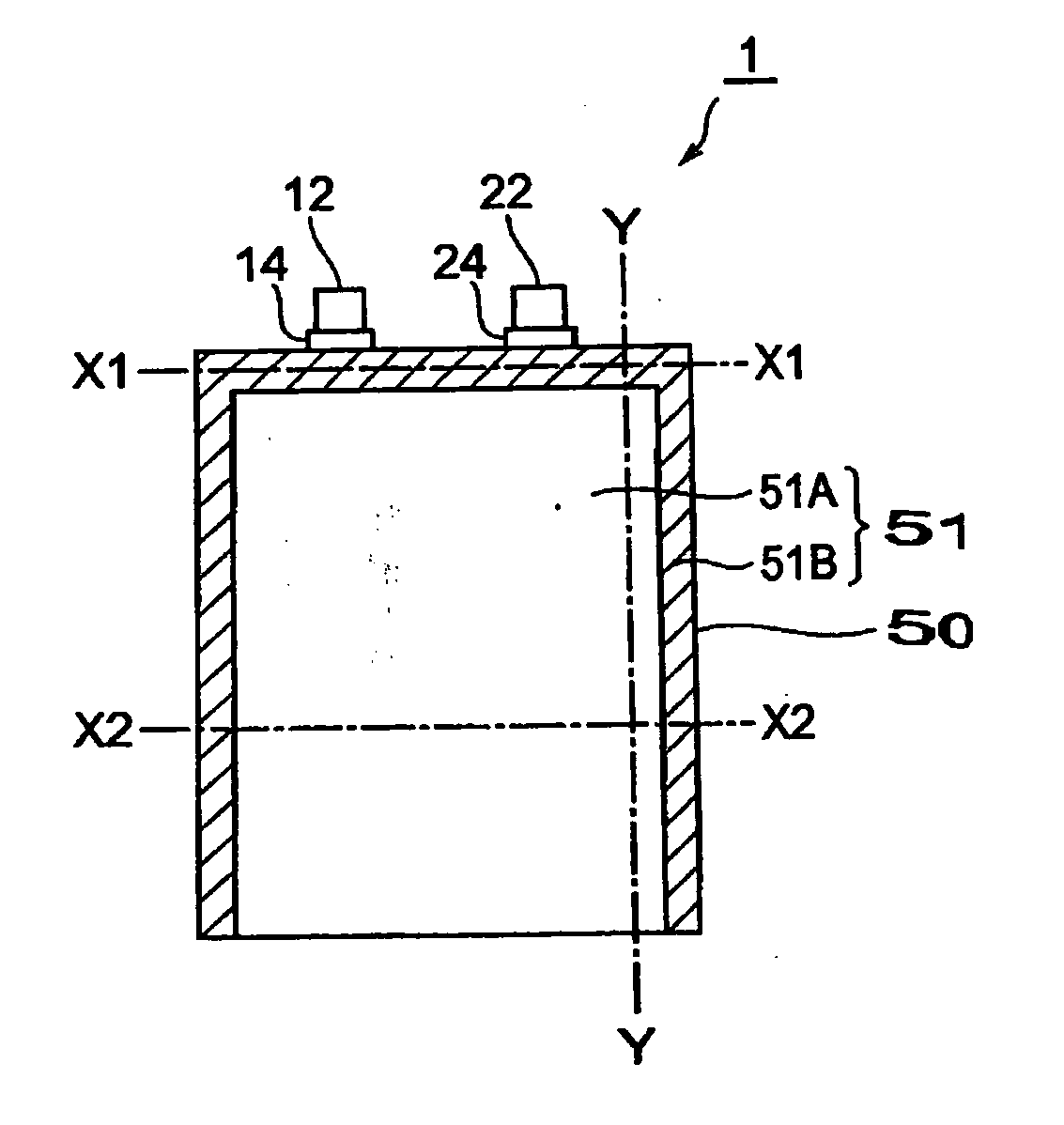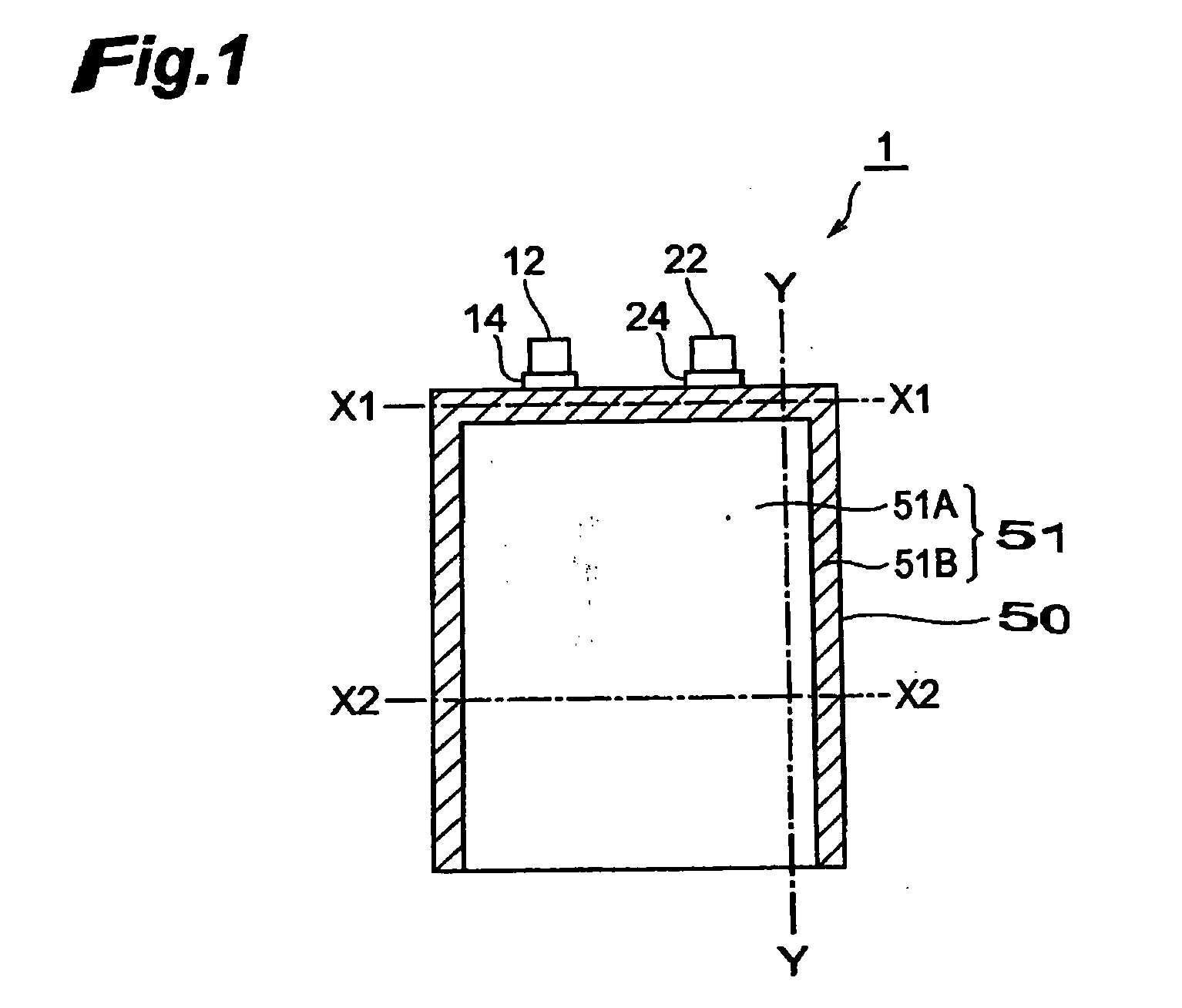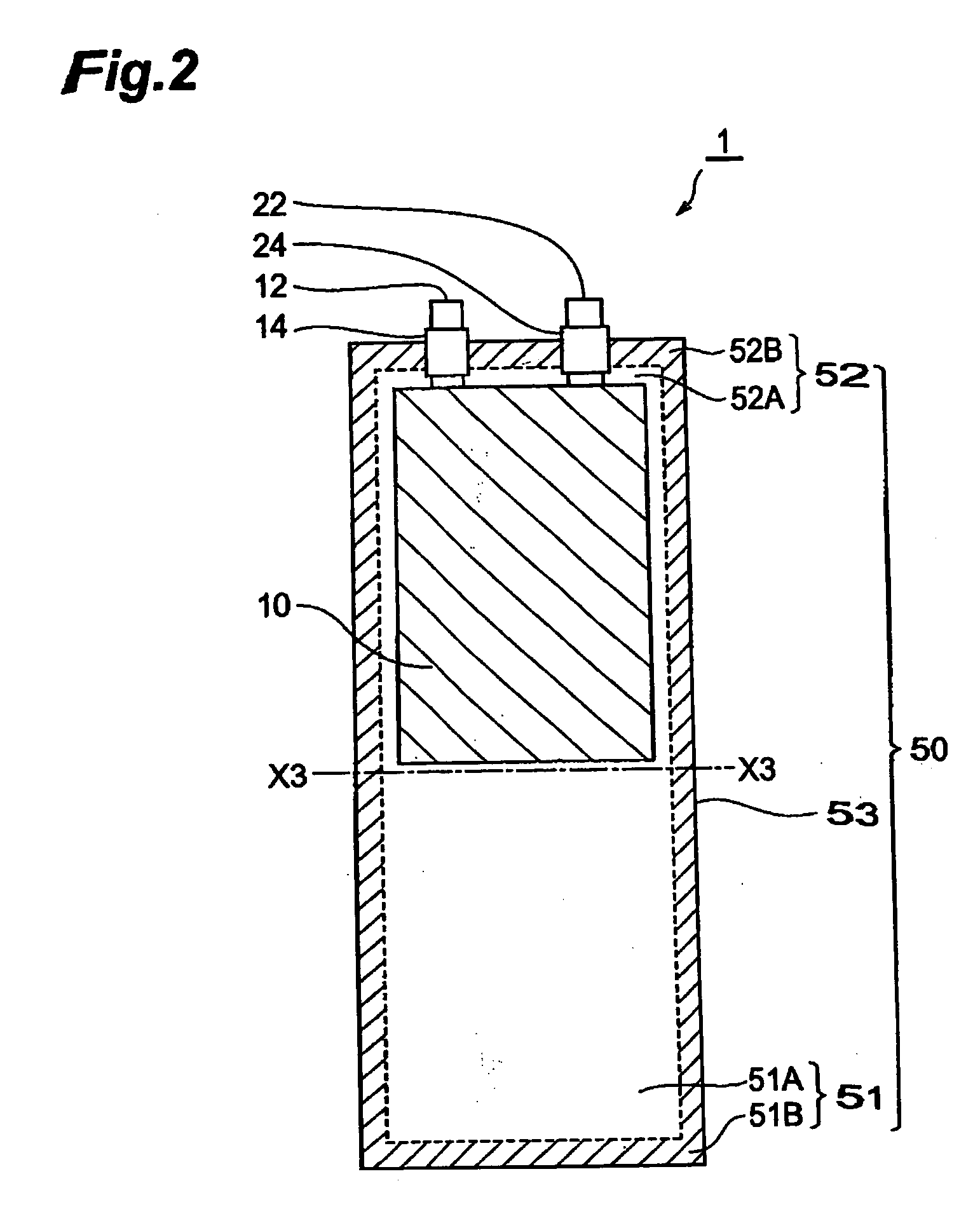Lithium-ion secondary battery
a secondary battery and lithium-ion technology, applied in the field of lithium-ion secondary batteries, can solve the problems of difficult to ensure safety, and achieve the effect of sufficient safety and higher capacity
- Summary
- Abstract
- Description
- Claims
- Application Information
AI Technical Summary
Benefits of technology
Problems solved by technology
Method used
Image
Examples
example 1
[0112] An anode was made. First, synthetic graphite (90 parts by mass) as an anode active material, carbon black (2 parts by mass) as a conductive auxiliary agent, and polyvinylidene fluoride (PVDF) (8 parts by mass) as a binder were mixed by a planetary mixer, and an appropriate amount of N-methyl pyrrolidone (NMP) was added thereto as a solvent, whereby a slurry was obtained. The slurry was applied by doctor blading onto an electrolytic copper foil (having a thickness of 15 μm) acting as a collector and then dried such that the supported amount of anode active material became 14.0 mg / cm2, so as to form an anode active material containing layer. The dried product was pressed by calender rolls such that the porosity of the resulting anode became 30%, and then was punched out into a size of 83 mm×102 mm, so as to yield the anode.
[0113] Next, a cathode was made. First, Li0.33CO0.34Mn0.33O2 (the numbers in the formula being atom ratios) (90 parts by mass) as a positive electrode activ...
example 2
[0120] A lithium-ion secondary battery was made as in Example 1 except that the laminate was dried for 12 hr at 60° C. in vacuum and that the moisture content in the anode active material containing layer was 45 ppm. Thus obtained lithium-ion secondary battery was subjected to the initial charging / discharging characteristic evaluation test, charging / discharging cycle characteristic evaluation test, and safety evaluation test.
example 3
[0121] A lithium-ion secondary battery was made as in Example 1 except that the laminate was dried for 6 hr at 60° C. in vacuum and that the moisture content in the anode active material containing layer was 50 ppm. Thus obtained lithium-ion secondary battery was subjected to the initial charging / discharging characteristic evaluation test, charging / discharging cycle characteristic evaluation test, and safety evaluation test.
PUM
| Property | Measurement | Unit |
|---|---|---|
| temperature | aaaaa | aaaaa |
| carbon number | aaaaa | aaaaa |
| mass ratio VC/PS | aaaaa | aaaaa |
Abstract
Description
Claims
Application Information
 Login to View More
Login to View More - R&D
- Intellectual Property
- Life Sciences
- Materials
- Tech Scout
- Unparalleled Data Quality
- Higher Quality Content
- 60% Fewer Hallucinations
Browse by: Latest US Patents, China's latest patents, Technical Efficacy Thesaurus, Application Domain, Technology Topic, Popular Technical Reports.
© 2025 PatSnap. All rights reserved.Legal|Privacy policy|Modern Slavery Act Transparency Statement|Sitemap|About US| Contact US: help@patsnap.com



